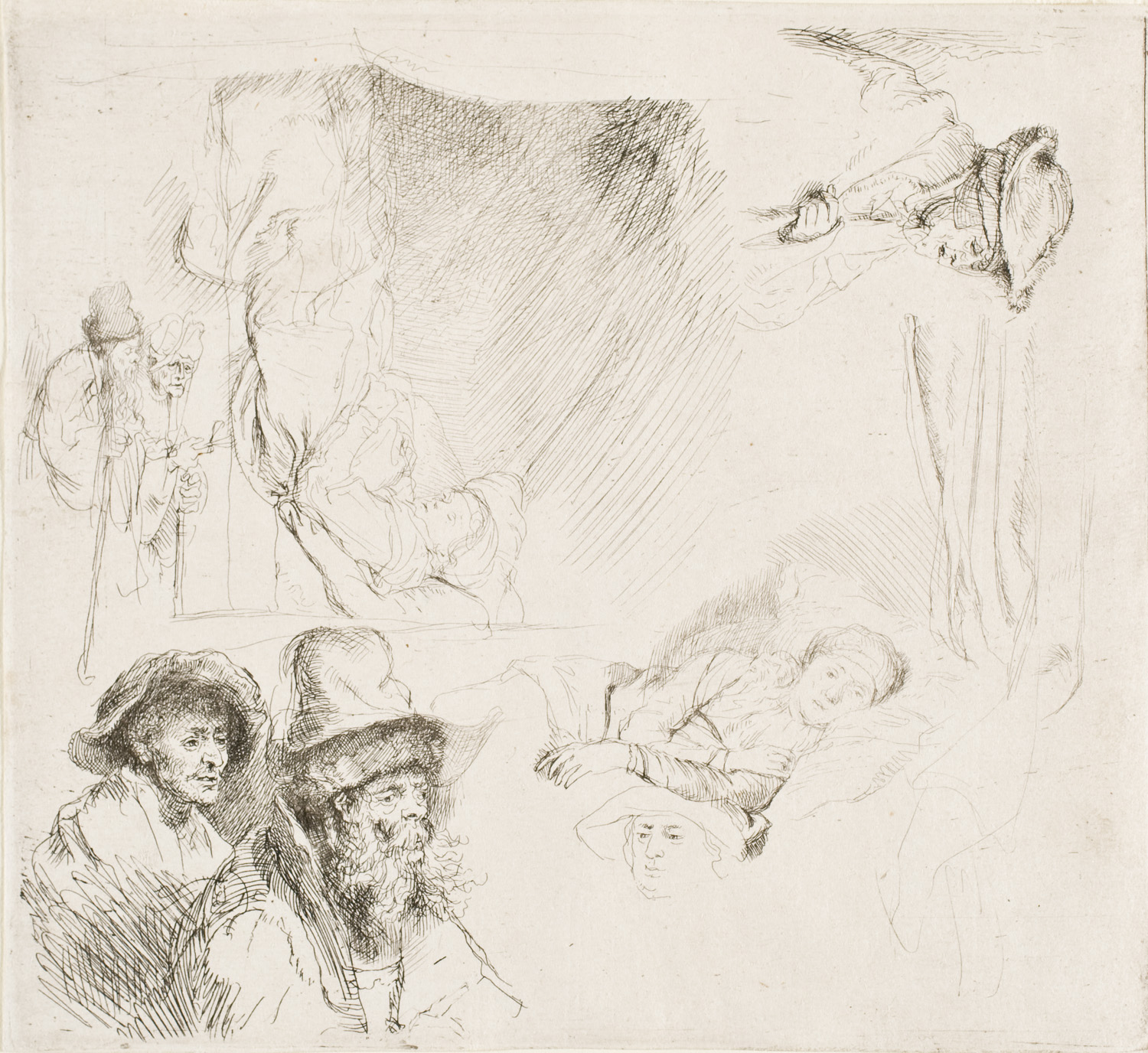Rembrandt van Rijn (Dutch, 1606–1669)
Self-Portrait with Saskia, 1636
Etching
Norton Simon Art Foundation, M.1977.32.027.G
Work and domestic life were entwined for Saskia van Uylenburgh (1612–1642) and her husband, Rembrandt van Rijn, whom she married in 1634. Here, Saskia sits across from Rembrandt as he possibly sketches her; a position that casts her equally in the roles of artist’s wife and model. Rembrandt rarely depicted himself at work, so her inclusion in this self-portrait is significant. Although Saskia is in the background—her soft outline contrasting with the bold hatching that contours Rembrandt’s figure—her gaze matches the intensity of her husband’s as she looks out at the viewer, or perhaps at her own reflection in the mirror that Rembrandt used to create the double portrait. She is shown as an essential figure in Rembrandt’s creative process, and indeed she appears in countless images that the artist produced during their eight-year marriage, even as she suffered from illness at the end of her life (Figure 3).

Figure: Rembrandt van Rijn (Dutch, 1606–1669), Sheet of Studies with a Woman Lying Ill in the Bed, Etc., c.1641/42, etching; only state, Norton Simon Art Foundation.
View ImageImage Credit: